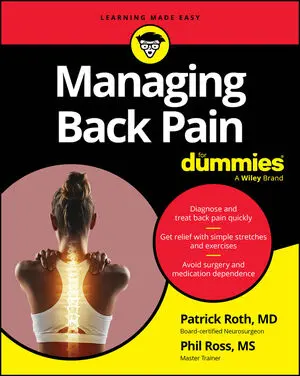Internal and external rotation exercises, grouped together, help you strengthen the rotator cuff area deep in your shoulder. If you're starting an exercise routine, it's natural to want to target your waist or thighs, but it's better not to overlook exercises that strengthen an injury-prone area like the rotator cuff.
You will need a tubular resistance band with handles, such as one of those available from any sporting goods store. If you can’t find this, try the other option, using dumbbells, mentioned after the exercise.
External rotations
Tie one end of the resistance band around a sturdy base such as a pole, a handrail from a staircase, or anything sturdy that is close to waist level.
The knot need not be fancy. Simply slip one end of the band through the handle around the base.
Stand at a distance equal to the length of the band and pivot your body so that either side is toward the base. Your feet should be hip-width apart. Take the opposite end of the band and hold it with the arm that is farthest away from the base. Keep the elbow bent and close to the body to form a 90-degree angle. Your fist should be centered forward to your body at start.
 Keep your wrist straight throughout the entire move.
Keep your wrist straight throughout the entire move.Slowly move your forearm outward to the side and slowly return to start as you maintain the 90-degree angle throughout the exercise.
 Stand tall and straight. Keep your abs in tight and butt tucked under.
Stand tall and straight. Keep your abs in tight and butt tucked under.Do one or two sets of 10 to 15 repetitions on both sides of your body.
Use the following variations to adapt this exercise to your fitness level:
Decrease the resistance: To make the move easier, stand closer to the base of the band. The further you stand away from the base, the more difficult the move becomes.
Use dumbbells: You can do this move anywhere. For variety, stand with your feet hip-width apart. Holding a dumbbell in each hand, bend your elbows so that your arms form 90-degree angles. Keep the elbows bent and next to your waist for the entire exercise. Your palms should be in front of your body facing the ceiling to start. Keep your shoulder blades squeezed together as you slowly move your arms out to the sides of your body. Return to start. Repeat ten times.
Internal rotation
The internal rotation exercise is very similar to the external rotation, except that it develops the internal rotator muscles instead of the external ones.
Start out the same as with the external rotation exercise. This time, however, hold the resistance band with the arm that is closest to the base with your fist to the side.
 You will need to step a little farther away from the base to provide resistance.
You will need to step a little farther away from the base to provide resistance.Stand erect as if you were a puppet being pulled by a string from the top of your head. Hold your abs in tight, and butt tucked under. Keep the shoulders relaxed and not raised up toward your ears. The elbows should be bent and close to your body throughout the movement.
Slowly move forearm inward until it reaches just beyond the center of your body and then slowly return to start.
 Do one or two sets of 10 to 15 repetitions on both sides of the body.
Do one or two sets of 10 to 15 repetitions on both sides of the body.
Also check out these modifications:
Decrease the resistance: To make the move easier, stand closer to the base of the band. The further you stand away from the base the more difficult the move becomes. Always use the correct form as described above.
Use dumbbells: You can do this move anywhere. For variety, stand with your feet hip-width apart holding a dumbbell in each hand. Bring both arms up and out to the sides at shoulder level, bending your elbows up at a 90-degree angle, so that your palms face forward. Keep your elbows still and pointed straight out from your shoulders as you rotate your arms so that the forearms go down, with the palms facing down, and then bring them slowly back up. Go only as far as is comfortable. Repeat ten times.






